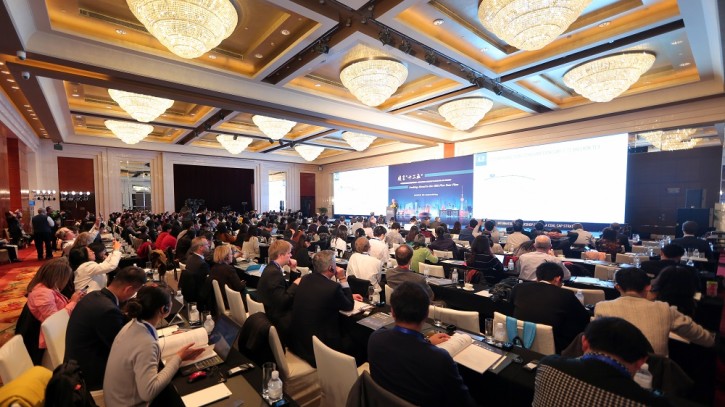Today, the Paulson Institute joined a roundtable hosted by the Natural Resources Defense Council on implementing coal consumption control in China’s 13th Five-Year Plan. The event was a part of the NRDC’s “Coal Cap Project,” brings together more than 20 leading government think-tanks, research institutes, and industry associations in China to develop a roadmap for implementing a national coal consumption cap target and policy to peak coal consumption in China by 2020. The research is focused on quantifying how coal caps can be implemented in China without hurting the economy.
At the event, Paulson Institute Associate Director of Research Anders Hove presented a summary of the Institute’s research on how the Jing-Jin-Ji region (Beijing, Tianjin and Hebei province) can take the lead on a sustainable economic transition, including prioritizing emissions reductions in the steel and building heating areas, while continuing to promote economic growth and employment in the region.
Detailed modeling of how coal caps would work at the provincial level is critical to setting reasonable carbon caps that account for local conditions. NRDC’s Yang Fuqiang presented findings that illustrate how policy efforts in China could be divided into provinces where air quality “red lines” are most critical for policymakers setting coal caps, and provinces where water-resource-related “red lines” are most critical. The phrase “red lines” refers to how the government has recently begun establishing minimum targets for air and water quality as well as ecological preservation.
Within individual sectors, such as buildings and steel, the analysis presented by various speakers showed that China has ample ability to scale back coal usage while continuing to grow the economy. In the steel sector, for example, researchers showed that China can boost recovery of scrap and recycled steel by 45% from 2015 to 2020. Since it requires less energy to recycle steel, coal use in the steel sector could fall nearly 10% by 2020 even as output remains roughly flat under the “new normal” of slower growth and lower fixed-asset investment. For the buildings sector, research by China’s Ministry of Housing and Urban-Rural Development and Beijing Jiaotong University showed that it is achievable for 50% of new buildings in China to be energy efficient by 2020 and that in the same year distributed renewable energy from ground-source heat pumps and rooftop solar photovoltaic (PV) panels could contribute 15% of building energy consumption.
The Paulson Institute also joined a closed-door session to hear experiences of provincial leaders dealing with issues related to implementing coal cap-related policies.




